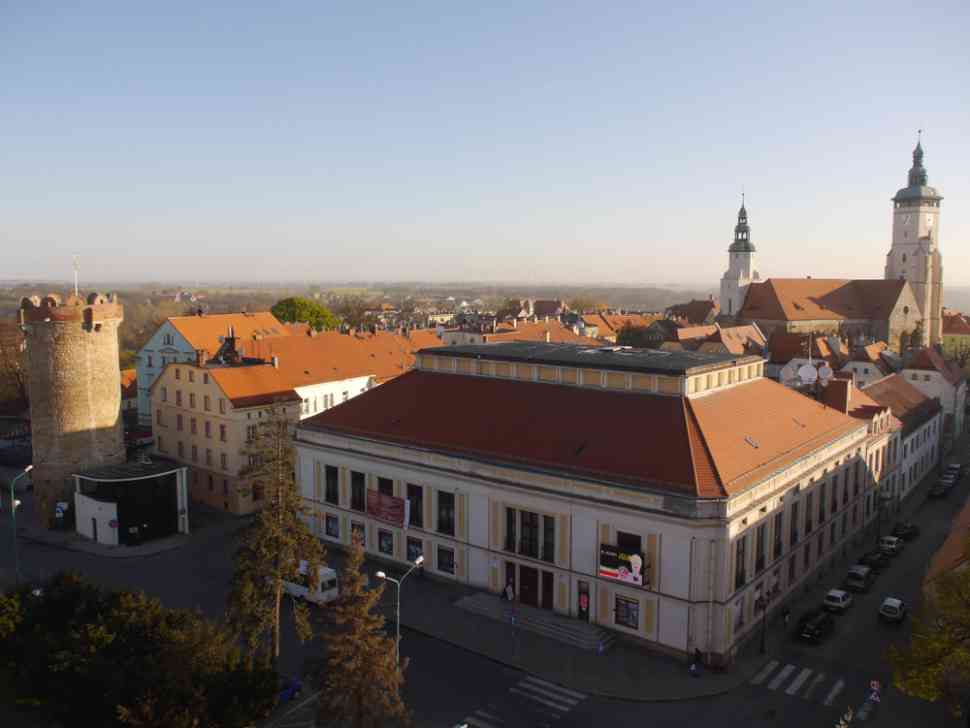Top 5 Cities In Poland You Didn’t Know

Many cities on the planet are unknown to you. In Poland, their charm is undeniable, and their times of glory may have passed, but their narrow streets and crumbling walls contain the magic of old times. Through this article, come to travel and get to know Poland’s “unknown” cities.
- Złotoryja
Let’s start with Złotorija, the oldest town along the Wisła River. It is located in the Kaczawa Foothills and was famous for its gold mining. Visit the 13th-century Church of St Mary, Smith’s Tower, Aurelia Gold Mine, and Gold Museum. Also, walk through the market square of Złotoryja and admire the city’s various decorative baroque and neoclassical houses.
In the city, you can find something delicious to eat; some of the most emblematic dishes of the city, such as pork loin with mashed potatoes and beetroot salad, duck breast with red cabbage, bigos (meat and cabbage stew) with venison, creamy nettle soup, and mushroom soup! - Nysa
We will continue our journey with Nysa. Centuries ago, Nyssa had vibrant architecture. It is on the trade route connecting Silesia with Bohemia. The city was an important commercial center. In the 18th century, the Prussian governors turned it into a fortress, and a century later, the education system of Nyssa experienced a flourishing period. Nyssa even had its own theater and was open until the outbreak of World War II. The damaged town center and medieval town hall have been renovated.
Today you can visit the Church of St. Jacob and Agnes, the Museum of Nysa, the Wroclaw Gate Tower, the Ziębice Tower, and Rynek Square. You will also see the diverse architecture within the huge market square. Walking on the south side, you will admire the renovated houses dating back to the 16th century. - Jarosław
Now, let’s travel to southeastern Poland to the city of Jarosław. In the 16th and 17th centuries, Jarosław was Europe’s largest market. The city had hosted the second-largest trade fair in Europe. It was a place where wine, honey, silk, corn, salt, fish, and animal skins were traded. At the time, different languages, cultures, and religions from all over Europe met in the market.
The city’s warehouses were located in an endless network of cellars and underground corridors, which is now a major tourist attraction. The Jaroslaw basement was used to store the goods in the large cold cellars. For many years this trading center was ruled by famous noble families, such as the Tarnowski, Zamoyski, Lubomirski, and Czartoryski; perhaps the most important of its owners was King Jan III Sobieski himself. - Chojnice
Chojnice is a town next to the Tucholskie Forest on the border of the Kaszuby region. In the early 14th century, Chojnice was conquered by the Teutonic Knights. Later they surrounded it with strong walls. Chojnice was one of the best-fortified cities in Poland, with 22 towers and four gates. Wars and fires later destroyed the walls. The only gate that survives today is Człuchowska Gate. Formerly, this building was closed every night with an iron grating, while today, it houses an ethnographic and Historical Museum.
In Chojnice, you can walk through the chłuchowska gate towards the Old Market and see rows of colorful houses from the 18th and 19th centuries. Visit the town hall, which was built in the Gothic Revival style, and do not forget to visit the city’s magnificent mansions, churches, and towers. - Chełmno
Chełmno was erected on nine hills in the Chełmno Upland area, and this settlement received Town privileges in 1233. The act of its foundation became a model for over two hundred other cities in Poland. Chełmno was the first capital of the Teutonic Order state and experienced rapid growth. As early as the end of the 13th century, the city had a grid of streets around the market square, six Gothic churches, and defensive walls, which have survived to this day.
One of the sights of Chełmno is its town hall which was built in the second half of the 16th century. The city has many “unknown” sights to visit, such as the Regional Museum, The Church of the Assumption, the Church of SS John the Baptist & John the Evangelist, and the castles of the Teutonic Knights. If you get tired, you can relax on one of the “lovers” benches, which are supposed to guarantee a happy love life.
Have you read?
Why your mindset is key to great business profits by Clare Wood.
How the wealthy manage their money differently by Jacqui Clarke.
What Active Diasporas Can Do For The Country And The Other Way Around by Radu Magdin.
Managing the Data Security Risks of Generative AI.
Tech or Talent, Both Need to be Guided by Value Frameworks to Create a Better World by Ram Krishna Sinha.
Bring the best of the CEOWORLD magazine's global journalism to audiences in the United States and around the world. - Add CEOWORLD magazine to your Google News feed.
Follow CEOWORLD magazine headlines on: Google News, LinkedIn, Twitter, and Facebook.
Copyright 2025 The CEOWORLD magazine. All rights reserved. This material (and any extract from it) must not be copied, redistributed or placed on any website, without CEOWORLD magazine' prior written consent. For media queries, please contact: info@ceoworld.biz








